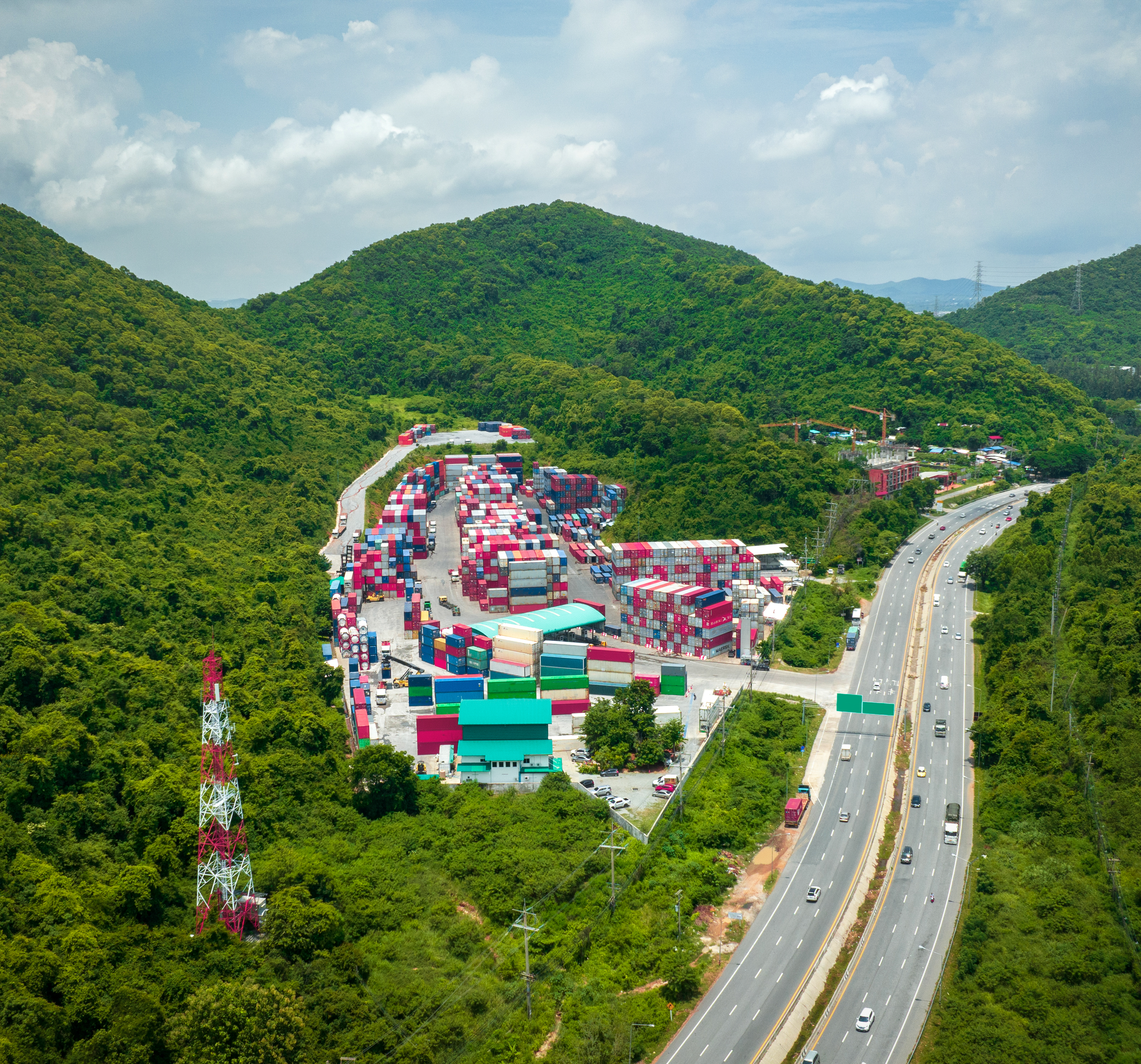Reducing waste in the supply chain is a crucial goal for companies seeking to improve their operational efficiency, sustainability, and ultimately, profitability. Waste, which can occur at various stages of the production, storage, and distribution process, represents significant losses that negatively impact product availability and revenue. In this article, we will explore the different types of waste, their impact on profitability, the benefits of reducing them, and the strategies that can be employed to achieve this.
What is waste in the supply chain?
Waste in the supply chain refers to the loss of products that occurs at different stages of the production, storage, and distribution process. This waste can result from a variety of factors, including physical damage, product expiration, inventory management errors, and discrepancies between supply and demand.
In the context of the supply chain, waste represents a significant challenge, as it not only affects product availability but also negatively impacts a company’s profitability and operational efficiency. Identifying and understanding the causes of waste is essential for developing effective strategies to minimize its impact. Addressing this issue is crucial for maintaining smooth and profitable operations while simultaneously improving sustainability and customer satisfaction.

Common types of waste
There are several types of waste that can occur throughout the supply chain. Understanding these types is essential to implementing appropriate strategies to reduce them.
Physical waste is one of the most common types and occurs when products are damaged during transportation, storage, or handling. This type of waste is especially relevant in industries dealing with fragile or perishable products.
Another significant type is expiration waste, which happens when products exceed their shelf life before reaching the final consumer. This is particularly problematic in sectors such as food and pharmaceuticals, where time management is critical.
Administrative waste also occurs, which arises from inventory management errors, such as incorrect counts or inaccurate records.
Finally, waste due to obsolescence can occur, especially in industries like technology, where rapid product evolution can leave inventory with no value.
Impact of waste on profitability
Waste has a significant impact on a company's profitability. First, it represents a direct loss of capital, as damaged or expired products cannot be sold, reducing potential revenue. Additionally, waste can lead to additional costs related to storing and disposing of unsellable products. These additional costs can accumulate quickly, especially for companies with large volumes of inventory. Waste also affects operational efficiency, as time and resources are required to manage it, diverting attention from other critical areas of the business.
Moreover, the inability to meet customer demand due to waste can damage a company’s reputation and lead to long-term customer loss. In summary, waste not only reduces profit margins but can also negatively affect efficiency and market perception.
Benefits of reducing waste
Waste has a significant impact on the supply chain, so it is essential to manage it effectively to reduce or even eliminate it. If we can reduce waste within our company, we can achieve various benefits, such as increasing operational efficiency, reducing costs, boosting profitability, and improving sustainability and social responsibility.

Increased operational efficiency
Reducing waste in the supply chain has a direct impact on operational efficiency . By minimizing product losses, companies can optimize their production, storage, and distribution processes, ensuring that resources are used more effectively.
Reducing waste allows companies to maintain more accurate inventory levels, facilitating better planning and coordination between different departments. This, in turn, reduces the time and resources needed to manage and correct errors, resulting in more agile operations and fewer disruptions in workflow.
Likewise, by improving operational efficiency, companies can respond more quickly to market demand, increasing their ability to meet customer needs promptly and effectively.
Cost savings and increased profitability
One of the most obvious benefits of reducing waste is cost savings. By decreasing product losses, companies can reduce expenses associated with replacing damaged or expired inventory. This not only improves profit margins but also frees up capital that can be reinvested in other areas of the business, such as innovation, market expansion, or infrastructure improvements.
Additionally, reducing waste can lead to a decrease in storage and disposal costs for products, further contributing to overall profitability. These cost savings can make a significant difference, allowing companies to offer more competitive prices and improve their market position.
Sustainability and social responsibility
Reducing waste also has important implications for sustainability and corporate social responsibility. By minimizing product losses, companies can reduce their environmental footprint, as fewer products are wasted and fewer natural resources are used inefficiently. This is especially relevant in sectors where products have a high environmental impact, such as food and chemical industries.
Additionally, companies that adopt sustainable and responsible practices can enhance their reputation and strengthen consumer trust, as ethical business practices are increasingly valued by customers. Reducing waste not only contributes to environmental sustainability but can also be a key component of corporate social responsibility, demonstrating the company's commitment to responsible resource management.
Strategies to Reduce Waste in the Supply Chain
Once the benefits of reducing waste in the supply chain have been outlined, various strategies to achieve this can be proposed. Among the possible strategies for reducing waste in our supply chain, key approaches include accurate demand planning, optimizing inventory management, and improving logistical processes.

Accurate Demand Planning
One of the most effective strategies for reducing waste in the supply chain is accurate demand planning. Utilizing advanced data analysis tools and demand forecasting allows companies to more accurately anticipate market needs and adjust their production accordingly. This helps to avoid overproduction, which can lead to excess inventory and, consequently, waste due to expiration or damage.
Demand planning also enables companies to be more agile and respond quickly to changes in consumer behavior, thereby reducing the risk of being left with obsolete products. Implementing accurate demand planning systems requires close integration between sales, marketing, and production departments, as well as the adoption of technologies that facilitate real-time analysis of market trends.
Inventory Optimization
Inventory optimization is another key strategy for reducing waste in the supply chain. Maintaining optimal inventory levels, based on a combination of demand forecasting and product turnover analysis, helps minimize the risk of obsolescence and damage. Inventory management techniques, such as Just In Time (JIT) and dynamic stock replenishment , can be very effective in ensuring that products remain fresh and available when needed, without accumulating excess stock.
At the same time, implementing advanced inventory management systems allows for greater visibility and control over inventory levels, facilitating early identification of potential issues and informed decision-making. Inventory optimization not only reduces waste but also improves operational efficiency and customer satisfaction.
Improvement of Logistical Processes
Improving logistical processes is essential for reducing waste in the supply chain. This includes optimizing transportation routes, using appropriate packaging to protect products, and implementing tracking and traceability systems.
Optimizing transportation routes helps reduce the time and distance that products must travel, thereby minimizing the risk of damage and expiration. The use of proper packaging is crucial for protecting products during transportation and storage, preventing losses due to physical damage. Additionally, implementing tracking and traceability systems enables companies to monitor the status and location of products in real time, facilitating the identification of problems and timely corrective actions. These improvements in logistical processes not only reduce waste but also increase the efficiency and reliability of the supply chain.
Implementation of Technologies to Minimize Waste
To implement the above strategies easily and effectively, technological solutions can be integrated into the daily management of the company. Thanks to new technologies, processes can be automated, large volumes of data can be processed, and informed decision-making can be improved.

Use of Planning and Optimization Software
The use of planning and optimization software is a crucial strategy for minimizing waste in the supply chain. These technological solutions allow companies to conduct more accurate and efficient planning of their operations, based on real-time data and advanced analytics.
Enterprise Resource Planning (ERP) systems and Software as a Service (SaaS) platforms provide integrated tools to manage demand, inventory, and production precisely. These systems enable companies to identify demand patterns, adjust production and inventory levels accordingly, and optimize resource use.
Furthermore, planning and optimization software facilitates collaboration among different departments, improving visibility and control over the entire supply chain. The adoption of these technologies not only reduces waste but also enhances operational efficiency and market responsiveness.
Integration of IoT Solutions and Automation
The integration of Internet of Things (IoT) solutions and automation is another effective strategy for reducing waste in the supply chain. IoT technologies allow companies to monitor storage and transportation conditions, such as temperature and humidity, in real time, which is crucial for sensitive products like food and pharmaceuticals. Connected sensors and devices provide precise and continuous data that can be used to make informed decisions and prevent problems before they occur.
Additionally, automating processes such as storage and handling of products reduces the risk of human error and physical damage. Automated storage and retrieval systems and collaborative robots can significantly enhance efficiency and accuracy in inventory management. The implementation of IoT and automation not only reduces waste but also increases the reliability and efficiency of the supply chain.
Reducing Waste in the Supply Chain Can Make a Difference
Reducing waste in the supply chain is essential for increasing operational efficiency, cutting costs, and improving the sustainability of companies. Implementing effective strategies, such as demand planning, inventory optimization, and improvement of logistical processes, along with the use of advanced technologies, offers tools to manage the supply chain more efficiently. These efforts not only enhance profitability but also strengthen the company’s position in the market.
At Imperia, we have planning software for the supply chain capable of optimizing all the processes involved. Thanks to our tool, companies can work more precisely and efficiently, improving their competitiveness in the market. If you want to learn more, request a free demo with our experts. We look forward to hearing from you!

Enter your email and download the content
In supply chain management, identifying key elements that require special attention can make the difference between success and failure.





























































 Imperia_thumbnail.jpg)





















